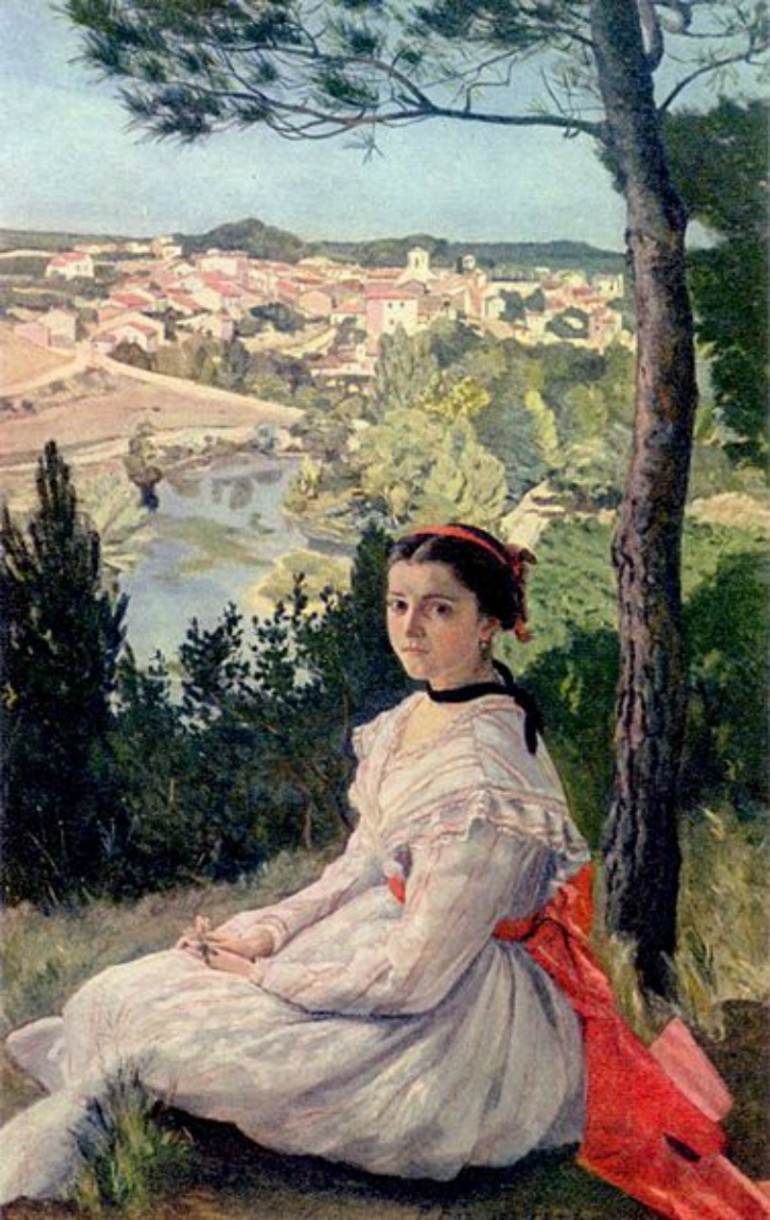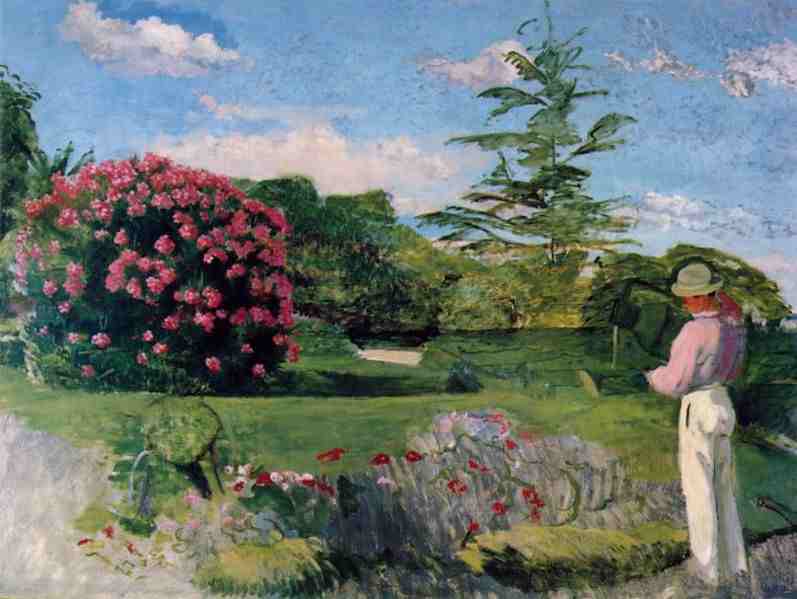French Impressionist Jean Frédéric Bazille was born on December 6, 1841 in Montpellier, France to a very wealthy family. His major works were distinguished for having a figure included in the landscape that were painted en plein air. He was inspired to take up painting after viewing some of the works of the greatest Romantic painter of France, Eugène Delacroix. He saw two of the famous artist’s works, “Daniel in the Lion’s Den” and “Woman of Algiers” at the home of Alfred Bruyas, an art collector who lived in Montpellier. However, his family only agreed for him to study painting if he would also take up medicine.
Move to Paris
Jean Frédéric Bazille started his medical studies in 1859 and moved to Paris for further studies in 1862. While in Paris, he got more interested in painting and started classes at the Ecole des Beaux-Arts in the studio of Charles Gleyre and got acquainted with Alfred Sisley, Pierre-Auguste Renoir and Claude Monet. Together, they formed a group that was separate from the other students at the studio. He watched Delacroix work in his studio with his friend, Monet. Monet and Bazille were also admirers of Manet. In 1863, these four young painters went to Forest of Fontainebleau to make several outdoor studies. In that same year, the studio of Gleyre closed down.
Two years after coming to Paris, Bazille sat for his medical exam but failed. He was then able to convince his family to allow him to take up painting. Due to his wealthy family, Bazille was able to rent a large apartment and studio in Batignolles. Working full time, his studio became the main base of the group – Bazille, Degas, Monet, Renoir, Manet and Sisley. It became known as the “Batignolles School” where the foundations of the impressionist movement was formed. Bazille generously shared his studio with his less fortunate artist friends. He also provided them with painting materials.
Style
Outdoor figural art was the term used to describe Bazille’s style of adding a figure to his landscape painting. One of his famous works, “Family Reunion” was exhibited at the Paris Salon in 1869. The painting showed the artist’s family in their estate in the country. The painting exemplified his skills in figure painting as well as his use of colors, which were a combination of realism and impressionism. He was particularly interested in the effect of light on the skin of his human subjects.
In 1869 Bazille created “Summer Scene” which was also called “Bathers.” It showed family friends enjoying a dip in a river. For this painting, he painted the figures in his studio before going outdoors to paint the landscape. It was accepted by and exhibited at the Paris Salon in 1870, the last time that he would be exhibiting and painting.
Popular Works
By age 23 he had already painted some of his works that became quite well-known, such as “The Pink Dress.” His model was his cousin, Thérèse des Hours, who wore a pink dress. Bazille painted her from behind, partly in the shade, gazing at a colorful landscape under brilliant sunlight. He painted this in 1864. Between 1867 and 1868, he painted one of his other well-known works, “Family Reunion.”
Franco-Prussian War
The Franco-Prussian War broke out in 1870 and Bazille volunteered to join the infantry. He was sent for combat training in Algeria and before the year ended he was already in the frontline. His unit was at the Battle of Beaune-la-Rolande where his officer got injured. Bazille, taking command led his troops in an assault on the Germans where he was fatally wounded. He died on the battlefield on November 28, just a few days before his 29th birthday.
Friends
The artist never married and many suspected that he was a homosexual, which, at that time, was repressed. However, he was a generous man, and developed close friendships with several of the mainstream Impressionist painters, including Berthe Morisot, Alfred Sisley, Pierre-Auguste Renoir, Claude Monet and Edouard Manet, who were frequent visitors to his studios. Camille Pissarro, writer Emile Zola, Paul Cezanne and even Gustave Courbet made several visits to his studios. It was said that only Bazille was able to engage in a verbal tussle with the often sarcastic and erudite Edgar Degas. Had he not died that young he would have been in the forefront of the Impressionist movement, just like his close friends.
Photo Attribution:
Featured and 1st image by Frédéric Bazille [Public domain or Public domain], via Wikimedia Commons
2nd image by Frédéric Bazille [Public domain], via Wikimedia Commons

